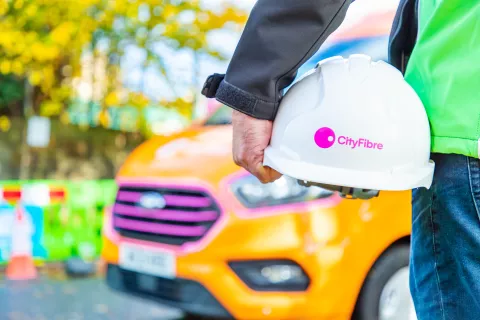
City communications
Hartlepool becomes one of the UK's best connected towns as CityFibre's primary-build completes
3 December 2024
Progress. It’s what we all work for and it seems there was quite a lot of it last year in terms of broadband availability. ADSL coverage increased by 1% nationally, while FTTC saw a 6% increase and FTTP coverage grew by 1.7%. It’s no surprise that FTTC - or superfast broadband in layman’s terms - saw the biggest increase given that the Government is quickly coming up on its self-imposed deadline of 95% coverage by the end of this year. But should we be looking beyond superfast? With BT focusing on G.Fast, will we see ultrafast speeds anytime soon?
 Paul Heritage-Redpath, Product Manager[/caption]
Progress. It’s what we all work for and it seems there was quite a lot of it last year in terms of broadband availability. ADSL coverage increased by 1% nationally, while FTTC saw a 6% increase and FTTP coverage grew by 1.7%. It’s no surprise that FTTC - or superfast broadband in layman’s terms - saw the biggest increase given that the Government is quickly coming up on its self-imposed deadline of 95% coverage by the end of this year.
The question now is of course where BDUK and BT will look to upgrade cabinets in order to achieve their 95% coverage target. The logical answer is that they’ll focus on the low-hanging fruit - that is cabinets that are easy and therefore more cost effective to upgrade than those requiring lots of engineering works. This will likely mean that the focus remains on urban and semi-rural locations, leaving those in the countryside to wither on a sub-par service until the Universal Service Obligation (USO) gives them something a little better - if they request it and it won’t cost too much to provision… As you can see from our infographic ‘Connectivity in the UK’, Ofcom’s Connected Nations Report 2016 says that there are 1.4m premises in the UK that can’t currently access a minimum speed of 10Mbps, the proposed minimum threshold speed of the USO.14% of these - or 200,000 premises - are small to medium-sized businesses and 69% (that’s 960,000 buildings) are in rural locations.
Paul Heritage-Redpath, Product Manager[/caption]
Progress. It’s what we all work for and it seems there was quite a lot of it last year in terms of broadband availability. ADSL coverage increased by 1% nationally, while FTTC saw a 6% increase and FTTP coverage grew by 1.7%. It’s no surprise that FTTC - or superfast broadband in layman’s terms - saw the biggest increase given that the Government is quickly coming up on its self-imposed deadline of 95% coverage by the end of this year.
The question now is of course where BDUK and BT will look to upgrade cabinets in order to achieve their 95% coverage target. The logical answer is that they’ll focus on the low-hanging fruit - that is cabinets that are easy and therefore more cost effective to upgrade than those requiring lots of engineering works. This will likely mean that the focus remains on urban and semi-rural locations, leaving those in the countryside to wither on a sub-par service until the Universal Service Obligation (USO) gives them something a little better - if they request it and it won’t cost too much to provision… As you can see from our infographic ‘Connectivity in the UK’, Ofcom’s Connected Nations Report 2016 says that there are 1.4m premises in the UK that can’t currently access a minimum speed of 10Mbps, the proposed minimum threshold speed of the USO.14% of these - or 200,000 premises - are small to medium-sized businesses and 69% (that’s 960,000 buildings) are in rural locations.
 BT steps up...
Ofcom has submitted it’s advice to Government on ‘Achieving decent broadband connectivity for everyone’, but the programme is still being pondered by MPs. BT Openreach has been the only infrastructure provider to step forward to provide the necessary infrastructure, which it claims can be done without any public funds.
BT steps up...
Ofcom has submitted it’s advice to Government on ‘Achieving decent broadband connectivity for everyone’, but the programme is still being pondered by MPs. BT Openreach has been the only infrastructure provider to step forward to provide the necessary infrastructure, which it claims can be done without any public funds.
With network projects in over 60 cities and construction underway to reach up to 8 million homes

City communications
3 December 2024

Corporate news
1 November 2024

Project Gigabit
24 October 2024